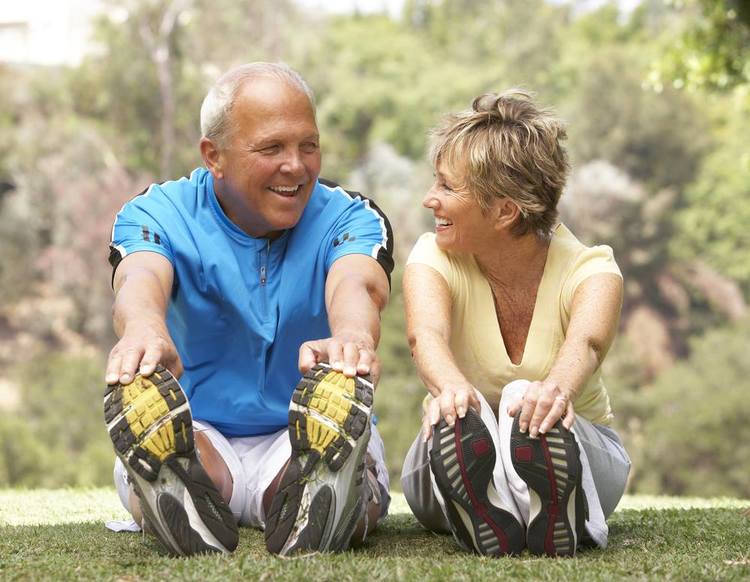Is replacing your worn out hip joint with a sturdy metal implant really the best option? What if you could reduce or even avoid wear and tear on your hip and maintain it in a healthy enough state that you can keep it for your whole life? It’s highly possible, and I am going to reveal the secret to healthy hips right now, free of charge!
In Australia over 32000 people have total hip replacements each year and many of these cases could have been completely avoided. Recovery can be frustrating, expensive and takes many months.
In some cases, people still continue to have problems with their new hip and activity limitations, not to mention hospital food is terrible for those 3-5 days you spend as an inpatient and those pesky hospital physios will force you to get out of bed to do painful exercises every day as part of your rehabilitation (twice a day if you back chat them!)
As a physio, even with good knowledge about medical procedures and great faith in my colleagues, I still believe that the best course of action is to avoid surgery wherever possible.
With the exception of some congenital defects and diseases, our bodies are built tough and made to withstand considerable stress, especially when used in the way they were intended.
Our bodies can cope with years of abuse (to a certain extent) and in many cases, it is not too late to do something to preserve your joints!
1. Nourish – move it or lose it!
When you move your hips through their full range of motion, the joint socket is nicely lubricated to keep allowing smooth and fluid movement, the muscles and nerve endings are stimulated to keep firing and functioning.
As our hips connect our legs to our torso, they are extremely important in initiating balance and locomotion to keep us both steady on our feet and able to move.
2. Protect – cushion the joint
Avoid impact from hard surfaces such as cement floors by wearing appropriate footwear.
Literally, if you are pounding the pavement in thin, hard or rigid soled shoes, you are wearing away the bone!
Furthermore, the lack of flexibility can restrict normal foot movement and reduce the natural rebound and cushioning that your body provides.
Another great reason to get around in your ‘Active Wear’.
3. Support – posture and positioning
By sitting and standing with your bones in good alignment you avoid unnecessary stress and tension on your hip socket and surrounding muscles.
In sitting, aim to be on top and slightly forward of your sit bones (yes, those bony bits that you can feel through your posterior cushioning).
Avoid low or ‘bucket’ seats in cars as this very flexed position puts strain on the hip socket.
Choose a supportive office chair with a firm, flat surface that can be adapted to your individual height.
This will ensure sufficient blood flow to your hips joints and legs to maintain good muscle and bone health.
Ideally, you would also have your feet flat on the floor or a foot rest and your knees slightly lower than your hips.
In standing try not to tuck your tail, or stick out your bottom.
Ideally your pelvis should be in the mid position and ‘free floating’ as being in one extreme or the other places stress on the psoas (hip flexor) which travels directly in front of your hip joint and is so important in maintaining good balance, locomotion and allowing free and co-ordinated movement between your pelvis and legs.
4. Strengthen – build that booty!
Not only does a round, firm bottom look great, but it goes a long way towards protecting and cushioning your hip joint, and filling out your favourite jeans.
Gluteals that are strong help to promote efficient movement reducing wear and tear, and joint stress.
There are a range of simple body weight exercises that you can perform at home to help build and maintain these muscles.
Squats, lunges, clams and donkey kicks are all favourites of mine and our clever physios can help teach you the correct technique.
If it all seems too hard, never fear, some bright spark invented undergarments with heavily padded hip cups to help protect your hip joints from fractures if you should fall over and land on them.
5. Value – care for your hips
Scar tissue can cause restricted movement and dysfunctional movement which in turn result in restricted blood flow, pain, tissue damage and nerve irritation, not just in the hip socket, but in adjacent joints as you start to compensate and avoid normal movement.
This is why it’s important to rehabilitate your injuries properly by seeing a physiotherapist and to receive guidance with any new or difficult exercises to ensure good technique and correct muscle activation.
Moderate activity is essentially your insurance policy against developing dodgy hips.
Most importantly though, realise that when a hip replacement or even exploratory hip surgery is performed healthy muscle tissue is sliced through and pushed aside to access your joint socket, which is also perforated for the surgeon to get inside and take a look!
All of these cuts and pokes heal through the process of creating scar tissue, which then in turn must undergo stress in the form of normal movement to be able to heal up and return to their healthy, strongest state.
New areas of damage are formed in the process of removing degenerative tissue to reduce severe pain, this is unavoidable, but you do have the power to choose an active recovery post surgery and with the help of your physio, avoid any extra or unnecessary pain and problems.
So there you have it, the secret to healthy hip joints, it really is as easy as counting to 5!

